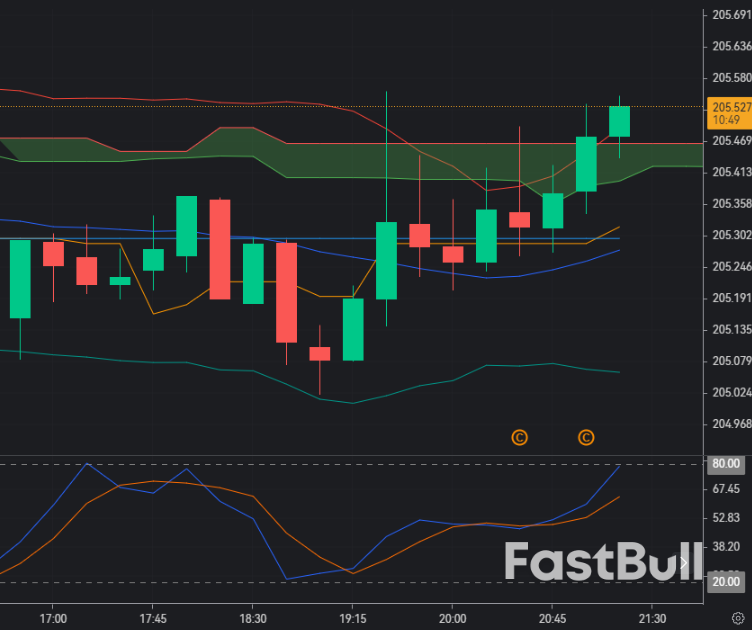Overview
The macro backdrop remains structurally supportive for GBP/JPY, even though both sides of the cross have their own issues. On the sterling side, the Bank of England kept Bank Rate at 4% at its 5 November meeting, with a tight 5–4 vote and a minority already pushing for a 25 bp cut to 3.75%. The November Monetary Policy Report explicitly notes that CPI inflation has “peaked” and that progress on disinflation is underway, but it also emphasizes that policy is still restrictive and that the path of future cuts will be gradual and data-dependent. Markets now price a high probability of a first cut in December, yet rate differentials remain firmly in the pound’s favour versus the near-zero world that the yen only recently left.
On the yen side, the BoJ is holding its policy rate at 0.5% while telegraphing the possibility of a further hike to 0.75% in the coming meetings, but the signalling has not been strong enough to reverse the broader yen downtrend. Recent commentary from Japanese officials has focused more on warnings of FX intervention than on a decisive monetary tightening path, and external analysts still expect only very small, cautious hikes into 2026.
In that configuration, GBP/JPY is free to trade as a classic carry and risk-sensitivity pair: a relatively high-yield pound against a still-low-yield yen. Spot around 205.3–205.7 today, with a 52-week range of roughly 184–207 and recent intraday ranges between 204.85 and 205.91, confirms that we are sitting very near the top of the yearly envelope rather than in a neutral mid-range.
Market sentiment
Sentiment is cautiously risk-seeking rather than fearful, which is exactly the regime where GBP/JPY tends to perform well. The US Dollar Index is oscillating just either side of 100, a level that reflects neither an aggressive global dash into USD nor a collapse in dollar demand. At the same time, the VIX has eased back toward the low-20s, with the latest readings around 20–21 after last week’s spike, signalling that equity volatility is elevated relative to the summer but no longer flashing systemic stress.
In this environment, traders are willing to hold carry trades such as GBP/JPY as long as the macro narrative remains: BoE still restrictive, BoJ still ultra-gradual, and global growth not falling off a cliff. Recent sell-side and broker commentary has repeatedly highlighted yen weakness as the dominant theme in FX, with GBP/JPY setting or approaching yearly highs above 206 and analysts openly discussing scenarios toward the 207–210 area if the yen remains under pressure.
At the same time, there is a realistic ceiling: Japan’s Ministry of Finance has already escalated its verbal warnings about intervention, and BoJ watchers are debating whether the next rate hike comes in December or in early 2026.
That means the market is happy to buy dips but also very aware that a surprise BoJ move or real intervention headline could trigger an air-pocket lower. The current sentiment, therefore, is not “buy at any level” but “lean long as long as the intraday structure respects support and policymakers do not dramatically change tone.”
Technical analysis
On the M15 chart, GBP/JPY is behaving like a classic late-trend grind with controlled pullbacks. Intraday feeds show today’s range clustered between about 204.85 and 205.9, with real-time quotes near 205.3–205.7 and the 205.0 level acting as a psychological pivot.
With Bollinger Bands set to 20,0,2, price is generally holding above the mid-line rather than hugging the lower band, and short-lived dips toward the 20-period moving average in the low-205 area are being bought. That pattern repeated rebounds from the mid-line after testing the lower half of the band tends to characterise an ongoing up-swing that is consolidating before another attempt at the upper band, which currently aligns with the intraday highs just under 206.
From an Ichimoku perspective with 9,26,52 parameters, price is rotating either inside the upper part of the M15 cloud or just above it; the top of the Kumo roughly coincides with the 205.0–205.1 zone that has already acted as support today. Tenkan-sen is either flat or slightly above Kijun-sen on rebounds, signalling that short-term momentum has not yet flipped bearish, and the forward cloud maintains a mild upward tilt, which is consistent with a trend that is pausing rather than reversing.
Stochastic (5,3,3) on M15 has recently cycled down from overbought levels above 80 and is now turning higher again from the mid-range 40–50 band on shallow dips. That configuration a mid-range %K re-cross above %D while price holds over the Kumo top is typically the “reset” you want to see if you are planning to enter in the direction of the prevailing trend rather than chase the extreme. Putting these pieces together, the most logical technical stance is to buy pullbacks into the 205.0–205.1 support cluster, with a protective stop tucked below today’s structural low and the lower edge of the cloud, and a target aimed back toward the recent highs near 206.8, which line up with the yearly peak region discussed in external technical forecasts.
Trade Recommendations
Entry: 205.500
TP: 206.80
SL: 204.30













